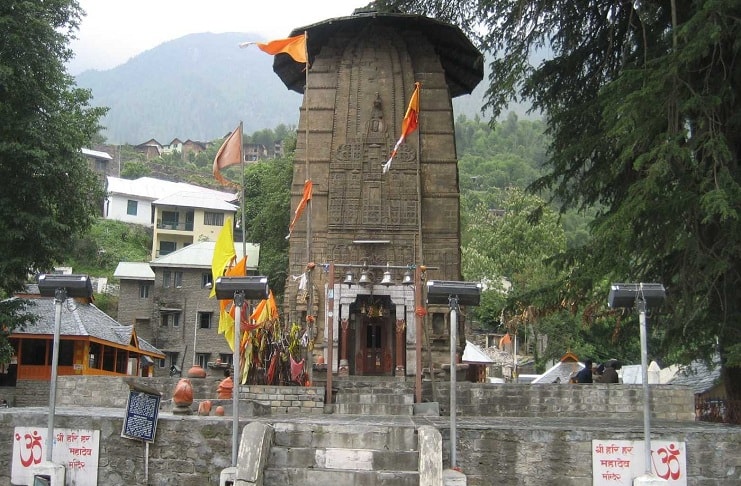Last Updated on 08/01/2025
The quaint little town of Bharmour is held in high regard for its sacred soil, which houses the Chaurasi Temple. In fact, it is a complex that includes many temples, with Lakshmi Devi, Ganesh, Manimahesh, and Narasimha being the main ones. Around these temples revolve the activities, culture, and customs of the local people. The magnificent mountains surrounding the area embrace the temple complex, adding majesty to an already devout atmosphere. The temple is also known as Chaurasi Khamba, owing to the exquisite 84 pillars that are part of the complex. Ring the bells that resonate through the tranquility, and experience a spiritual journey with NamasteIndiaTrip.

The story dates back many centuries when the place was known as Brahmpura, and Goddess Brahmani Devi resided here. Once, when she was away for a while, Shiva arrived with 84 Yogis or Siddhas (Saints) on his way to Manimahesh Kailash. When Brahmani Devi returned and saw the smoke rising from the fires lit by the saints, she became furious and demanded that they leave. Shiva, however, requested permission to stay for just one night, assuring her that they would leave the next morning. The following day, Shiva left Kailash, but the saints remained. Unwilling to leave, they transformed into 84 Shivlings. Brahmani Devi was blessed by Shiva, who decreed that anyone undertaking the Kailash pilgrimage must dip in the holy Brahmani Pool before continuing their journey; otherwise, their pilgrimage would be fruitless.
The Brahmani Pool is located below the Brahmani Cave, and it is said that she procured the water for this pool from Sandholi Naag, situated on the opposite side of the ridge. The legend of how Brahmani became a goddess is equally fascinating. It is said that Brahmani lived in a garden on a tall ridge, and her son was very fond of the Chitkor bird. The bird was killed by a farmer, and the loss was too much for her son to bear. He died from grief, and heartbroken, Brahmani buried herself alive. The spirits of all three—Brahmani, her son, and the bird—are said to haunt the local people.
Another tale associated with the temple involves King Sahil Varman, who ruled during the tenth century. 84 Saints visited his kingdom, and pleased with his hospitality, they granted him the boon of ten sons and a daughter. The town of Chamba is believed to have been named after his daughter, Champavati. The temple also holds significance as the abode of the Pandavas during their 14 years of exile.
A Ganesha temple stands near the entrance of the complex. The tallest temple is that of Manimahesh, which has been constructed in the Shikhara style. The most ornate temple, based on the old wooden style, is the Lakshana Devi Temple.
The best time to visit the Chaurasi Temple is from May to November, as it gets bitterly cold and snowed-in during winters. Devotees visit the temple during their pilgrimage to Manimahesh Kailash, which takes place during this period. Bharmour offers ample accommodation options, and reaching the temple is relatively easy, with the town being 65 km from Chamba. Several special buses ply on this route. Bharmour is also well connected by rail, with the nearest broad gauge and narrow gauge stations at Pathankot and Kangra, respectively. With so many gods dwelling together, it becomes all the more compelling to visit the temple and seek redemption from sins.
Note:
- The temples of Lakshana Devi and Ganesha are the oldest in the complex.
- There is a spellbinding brass idol of Lakshana Devi in her Mahishasura Mardini avatar.
- The water of Ardh-Ganga or Gupt Ganga, a sacred water source located in a corner of the complex, holds significant religious value.
- Bharmour is also referred to as Shiv Bhoomi.


 Call
Call WhatsApp
WhatsApp Enquiry
Enquiry